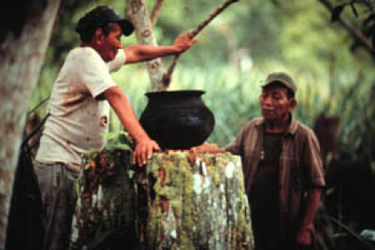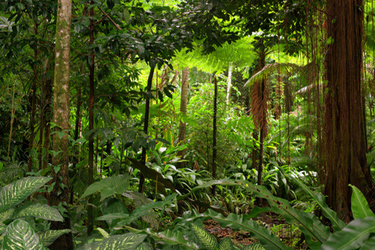Ayahuasca, also known as yagé, is a native vine of the Amazon basin which is used to produce a powerful psychoactive substance. The resulting ayahuasca brew has been used as a traditional spiritual medicine by the indigenous tribes of the region for thousands of years.
Previously limited to its traditional use by native peoples, the mystical drug has been gaining popularity among tourists, who have flocked to various retreat centers and “shamans” in the jungle areas of Peru in recent years. Its purported benefits are plenty: it has been said to help with self-discovery, anger problems, addiction, and even medical problems such as cancer.
Official websites

Ayahuasca sessions are also commonly accompanied by intense closed-eye hallucinations which can be extremely vivid and realistic. With the eyes open, the user also experiences a greatly altered perception of reality, with the “texture” of the outside world seeming different and a skewed sense of time. Emotions will be felt to a much more intense degree while under the drug’s effects. The experience usually lasts anywhere from 4 to 8 hours.
Although most people come away from the experience with positive memories, it is not uncommon for the experience to be psychologically traumatizing. One’s brain is highly impressionable while under the effects of ayahuasca, so it’s important to be aware of your mood before taking the drug and understand how this may affect your experience.

So, is the ayahuasca experience for you? This is something for each individual to decide after carefully weighing the risks and benefits. Ayahuasca can be an amazing, even life-changing, experience for many people, as long as its risks are properly taken into account. If you’ve decided that this experience is for you, continue reading below to learn more.
Ayahuasca ceremonies are typically conducted in a small group setting with around 5-20 people. They can take place either during the day or at night, but night ceremonies are more common. The exact details of the ceremony can differ depending on the nature and preference of the lodge chosen. However, there are common elements which one will encounter in most ayahuasca ceremonies.
First, the participants are usually seated in a circle, each with a bucket or other container for vomiting. In the center is the shaman, or curandero, who opens with a prayer requesting protection for the ceremony. Next, the ayahuasca tea is distributed to each participant for consumption. At this point, the shaman begins to sing icaros, a type of song or chant used to summon healing spirits while the medicine takes effect. The amount of time can vary for each individual from 15 minutes to an hour or more. It is common to become nauseous and vomit as the tea takes its effect–in fact, vomiting is considered an integral part of the experience by many shamans as it supposedly helps to cleanse the body and spirit from negative influences, allowing for a feeling of rebirth. The singing of icaros may continue throughout the ceremony along with other musical forms like instrumental drum playing.
The shaman may also stimulate the participants’ olfactory senses during the session by blowing tobacco smoke or incense. In addition to the shaman leading the ceremony, there are also often assistants present to help facilitate basic needs for the participants, such as going to the bathroom or getting water.

It is recommended to do plenty of research before choosing your location. There are several websites easily accessible via google which allows users to review shamans and hosts of ayahuasca ceremonies, so it’s advisable to check out any available online reviews for your chosen lodge before making any commitment. Many people choose to do this trip while visiting the Sacred Valley, the main valley of the Inca.
If you’re interested in seeing more of Peru before immersing yourself in the jungle for your ayahuasca experience, we recommend using Peru Hop to get around the country. Peru Hop is a hop on hop off style bus company which visits many of the most well-known sites in Peru, allowing you to set your own itinerary and see the country at your own pace.
Have a good “trip”!